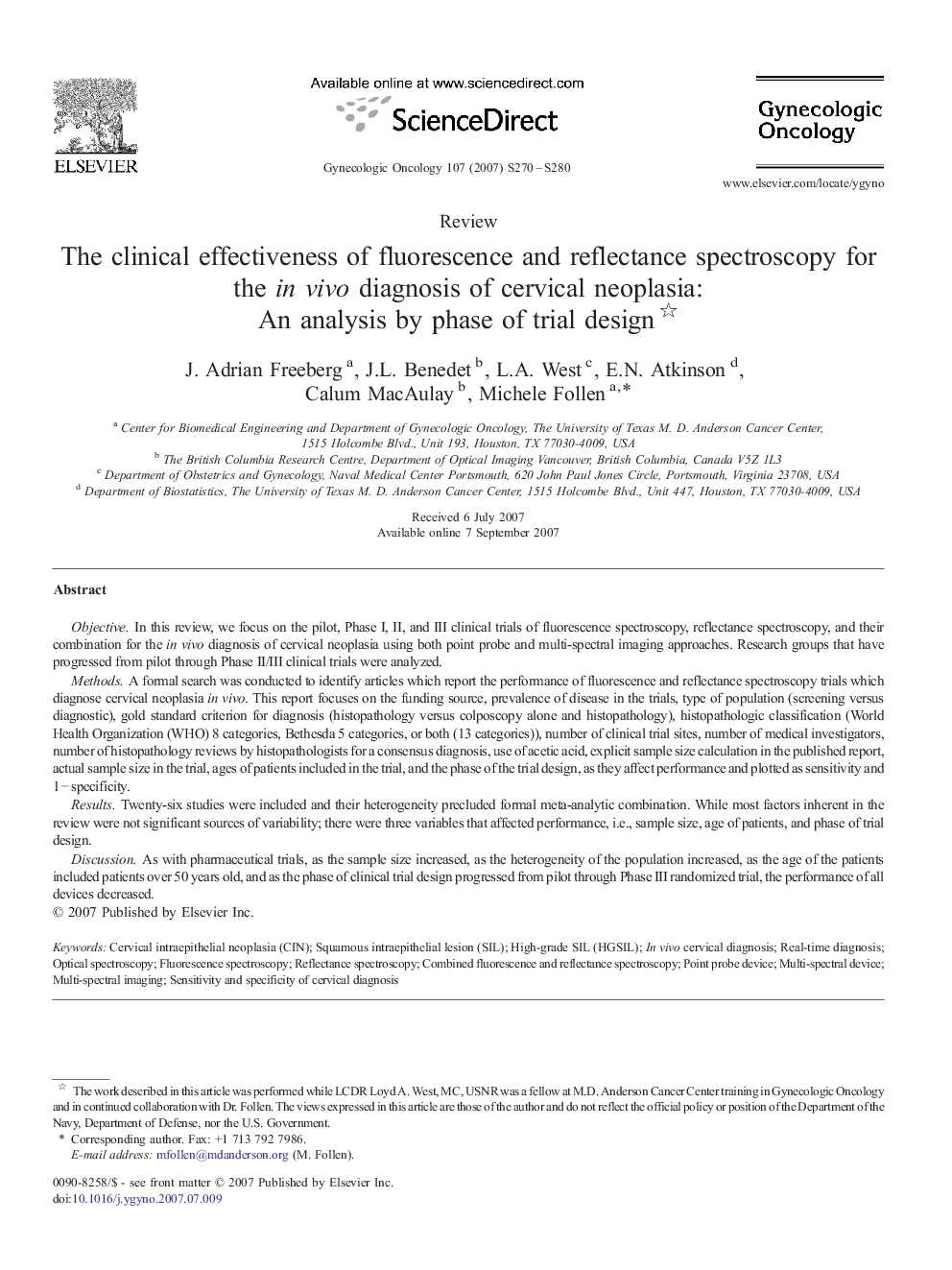| Article ID | Journal | Published Year | Pages | File Type |
|---|---|---|---|---|
| 3946337 | Gynecologic Oncology | 2007 | 11 Pages |
ObjectiveIn this review, we focus on the pilot, Phase I, II, and III clinical trials of fluorescence spectroscopy, reflectance spectroscopy, and their combination for the in vivo diagnosis of cervical neoplasia using both point probe and multi-spectral imaging approaches. Research groups that have progressed from pilot through Phase II/III clinical trials were analyzed.MethodsA formal search was conducted to identify articles which report the performance of fluorescence and reflectance spectroscopy trials which diagnose cervical neoplasia in vivo. This report focuses on the funding source, prevalence of disease in the trials, type of population (screening versus diagnostic), gold standard criterion for diagnosis (histopathology versus colposcopy alone and histopathology), histopathologic classification (World Health Organization (WHO) 8 categories, Bethesda 5 categories, or both (13 categories)), number of clinical trial sites, number of medical investigators, number of histopathology reviews by histopathologists for a consensus diagnosis, use of acetic acid, explicit sample size calculation in the published report, actual sample size in the trial, ages of patients included in the trial, and the phase of the trial design, as they affect performance and plotted as sensitivity and 1 − specificity.ResultsTwenty-six studies were included and their heterogeneity precluded formal meta-analytic combination. While most factors inherent in the review were not significant sources of variability; there were three variables that affected performance, i.e., sample size, age of patients, and phase of trial design.DiscussionAs with pharmaceutical trials, as the sample size increased, as the heterogeneity of the population increased, as the age of the patients included patients over 50 years old, and as the phase of clinical trial design progressed from pilot through Phase III randomized trial, the performance of all devices decreased.
